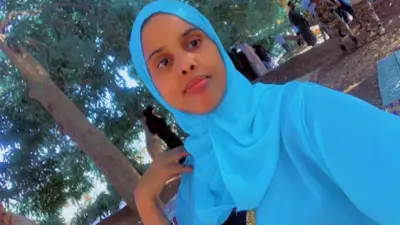We've updated our Privacy and Cookies Policy
We've made some important changes to our Privacy and Cookies Policy and we want you to know what this means for you and your data.
Drones used to spot leaky pipes via satellite in space
Top Stories
- Author, David Gregory-Kumar
- Role, Science, Environment & Rural Affairs, ≥…»ÀøÏ ÷ News
It's not a surprise that pushing water at pressure through sometimes elderly pipes can lead to leaks.
And for a while loss of water was perhaps just accepted as one of those problems that would be too difficult and too expensive to really crack down on. But in the face of increasingly tough leakage targets water companies are turning to technology to track down escaping water.
First, let's acknowledge just how hard it is to track down a leaking pipe buried deep underground.
There are a number of tools engineers can use including flow meters and even listening for the distinctive tinny rushing sound of escaping water. But as leakage targets have become tougher it's been clear for some time that new ways of finding leaks are needed.
Top Stories
And before we go on a quick word about dowsing.
There's been much shock, horror and laughter in the science recently that waster companies still use dowsing rods. Chatting to Severn Trent they are very clear that dowsing rods form no part of official leak detection methods. But it is possible some engineers do use them out in the field. Although obviously they clearly don't work as dowsing is superstitious rubbish.
Drones with thermal cameras
Rather than wobbly sticks Severn Trent are trialling two exciting new methods to track down leaks.
Top Stories
First, they are using a drone equipped with a high-resolution thermal camera that can detect minute changes in temperature. Water leaking from pipes is often a different temperature to the ground around it. The hope is the drone will be able to detect this slight temperature difference between a pool of escaped water and the ground, even if the water is actually out of sight under the surface. It's early days in the drone trial and while promising Severn Trent need more data.
The other new idea is to use a Japanese satellite some 600km (373 miles) above us to scan the Midlands looking for leaks. It's not actually looking for water but rather it's detecting the signal from the low levels of chlorine found in treated drinking water.
Japanese satellites
The end result is a map with a circle on it about 50m (164ft) across.
At the moment circles are marked green, amber and red which indicates how confident those behind the analysis are that there's a leak present. Since it's a trial Severn Trent is currently investigating all suspected leaks and so far the satellite has a hit rate of about one in three.
That's actually above what Severn Trent expected and the satellite seems to be good at spotting big and small leaks, one on a pipe affecting just half a dozen houses. Now fixed.
On the ground the satellite is proving popular because it pinpoints much smaller locations than the engineers usually have to check out. So even if they don't find anything the whole process has become much quicker overall.
Severn Trent has reduced leakage by 14 million litres a day and is beating its leakage targets.
It sits just above the average for when compared to other water companies. But there's still plenty to be done. Of the nearly 2 billion litres of water that flow through its network every day around 400 million litres are lost to leaks. The hope is with these new approaches to detection it will become easier and also more affordable to plug the holes in our pipes.
Top Stories
More to explore
Most read
Content is not available








